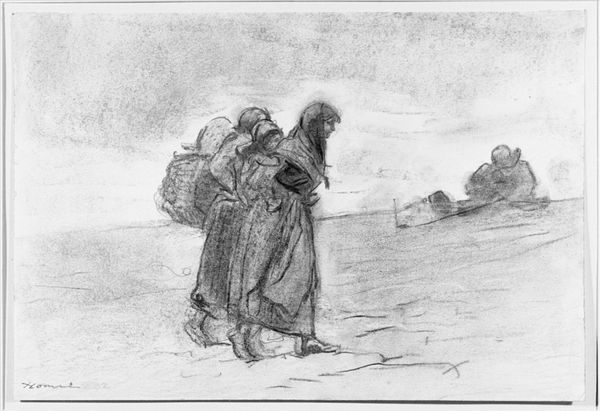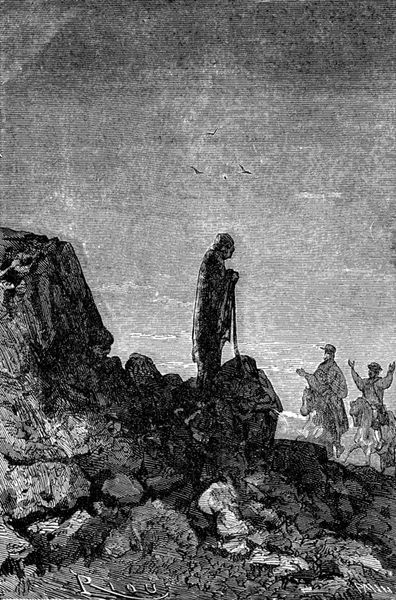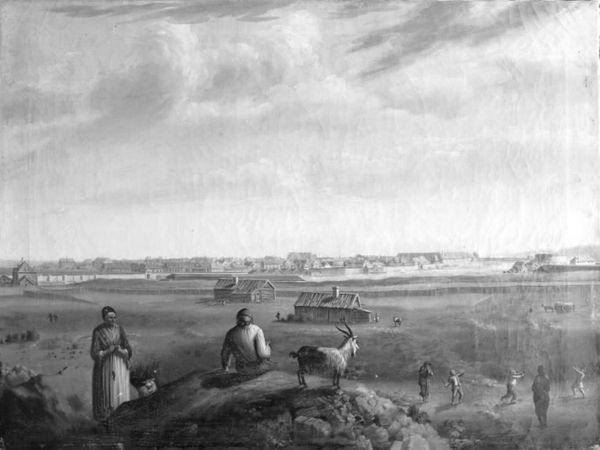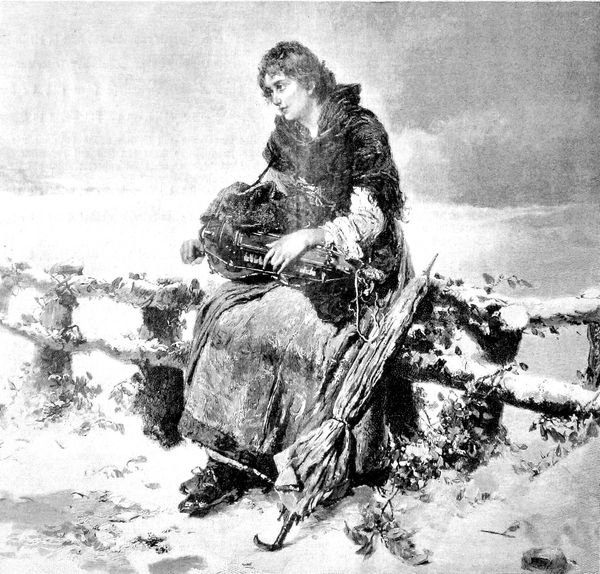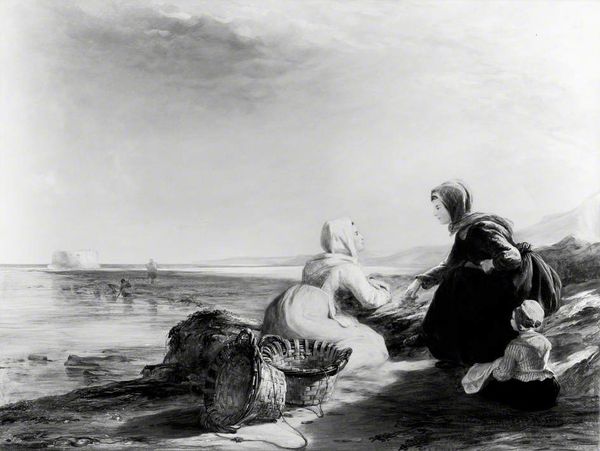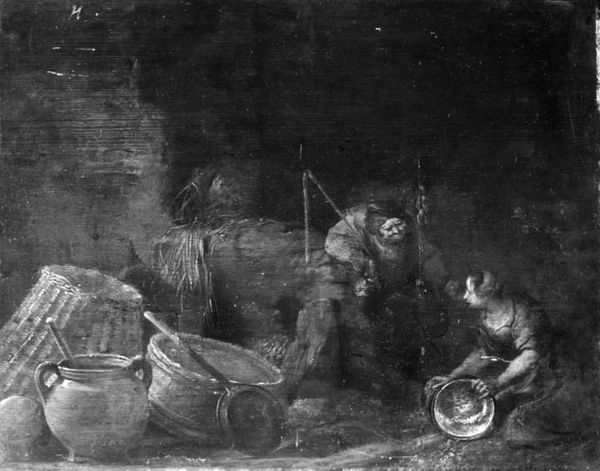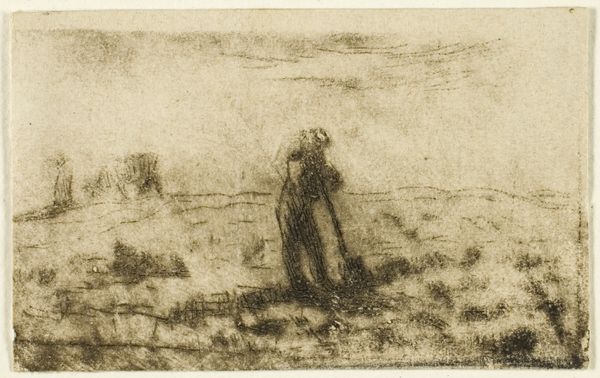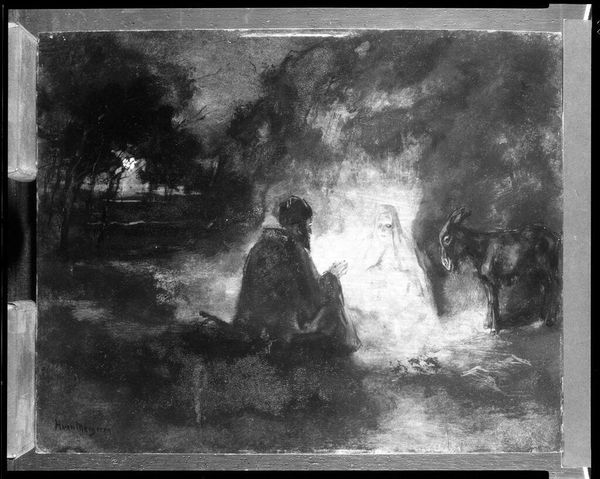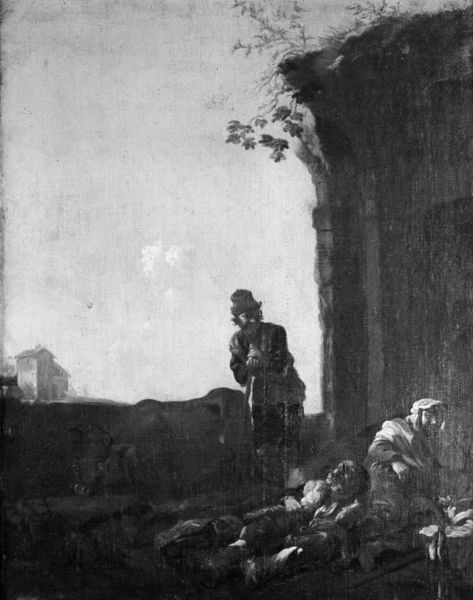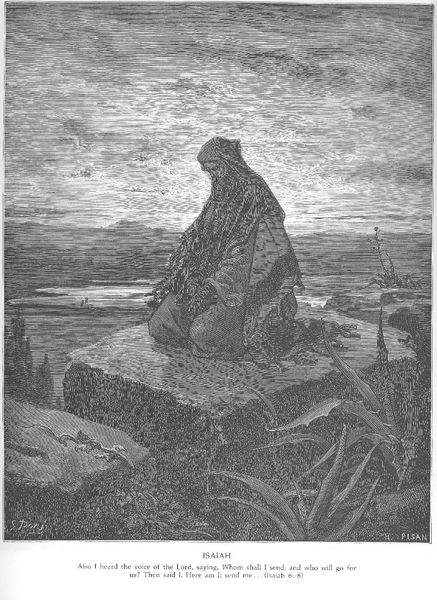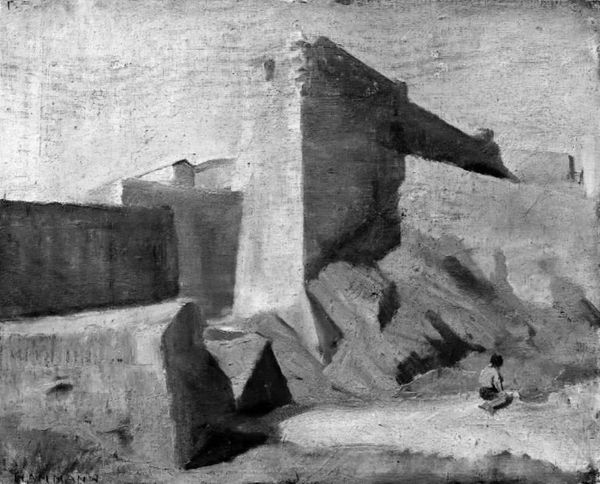
drawing, canvas, charcoal
#
drawing
#
landscape
#
charcoal drawing
#
figuration
#
canvas
#
romanticism
#
genre-painting
#
charcoal
#
monochrome
#
charcoal
#
monochrome
Dimensions: 26 cm (height) x 53 cm (width) (Netto)
Curator: Franz Ludwig Catel crafted this "Evening Landscape with an Old Monk" sometime between 1811 and 1856. It's rendered in charcoal on canvas and is currently held at the SMK, Statens Museum for Kunst. The muted monochrome palette immediately sets a pensive, perhaps melancholic mood, don't you think? Editor: Absolutely. That solitary figure of the monk, juxtaposed against the ruined architecture, does evoke a sense of temporal loss, doesn’t it? There’s an undeniable air of Romanticism, a yearning for something beyond the tangible. Curator: Indeed. Romanticism favored themes of introspection and the sublimity of nature. It’s interesting how Catel utilizes the artistic conventions of the landscape style to give importance to an almost genre-painting representation. This canvas would have resonated with viewers immersed in debates about religion and individual experience during its time. Editor: Yes, his posture, leaning on the staff—a symbol itself of pilgrimage or steadfastness—suggests resilience but also weariness. His clothes mark him as a man withdrawn from worldly pleasures, but is that really true, or just a cliche? One can see that monks were not the cultural leaders they used to be back in medieval times. Curator: Exactly! Catel subtly plays with familiar visual symbols to invite his contemporary audience to ponder these socio-cultural shifts. We, too, perhaps project our own assumptions about monastic life and spiritual quests. This type of landscape became highly prized in times where spiritual doubts became the center of many debates, just remember Caspar David Friedrich's paintings and the critics they had at the time! Editor: It prompts a larger consideration of how we perceive devotion and the solitary pursuit of meaning. The decaying building seems to signal lost power, or the end of dogmas. Do you feel this is an objective, critical rendering? Or is he somewhat melancholic about what monks used to mean for their societies? Curator: A complicated question. I would hesitate to view it purely as criticism or reverence. Catel paints a picture in the transitional period of the role of organized religion within communities. But his romantic, slightly sentimental rendition still invites introspection. Editor: It is true. The lasting power resides in the open invitation to ponder—the quietude allows for deeper engagement. I appreciate how the symbolic landscape adds a reflective dimension beyond a mere portrayal. Curator: And for me, the lasting intrigue rests in how such a seemingly simple monochrome rendering serves as such an insightful glimpse into both art history and the religious sentiments of the era.
Comments
No comments
Be the first to comment and join the conversation on the ultimate creative platform.
